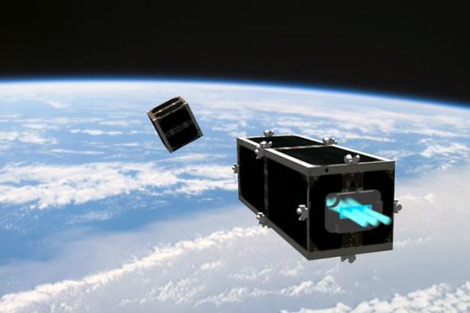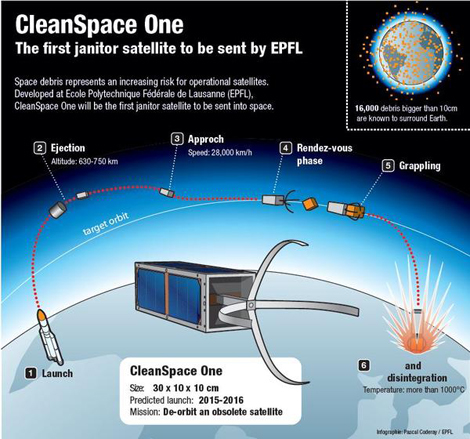New Housekeeper Satellites to Clean Up Space Junk

After over 50 years of humanity sending things into orbit, outer space is starting to look a bit cluttered. While Russia is reportedly investing over $2 billion to fix the problem, now the Swiss are also poised to join the space cleanup crew. The Swiss Federal Institute for Technology at Lausanne (EPFL) has announced plans to create a $10.8 million satellite called CleanSpace One for the purpose of picking up space debris.
So why the urgent need for spring cleaning? Currently NASA is tracking over 16,000 objects larger than 10cm (about 4 inches) in diameter orbiting the Earth, all of which are potential hazards for both manned and unmanned spacecrafts. In 2009, for instance, pieces of an older Russian satellite collided with and destroyed the U.S. satellite Iridium, which cost $55 million to make. Compounding the space junk issue is the fact that collisions such as these often result in the creation of thousands more pieces of debris.

CleanSpace One is designed to tackle three main functions: tracking an orbiting object, capturing it, and “de-orbiting” it back into the Earth’s atmosphere, where both satellites will burn upon re-entry. Although CleanSpace One will be a single Kamikaze-style mission, EPFL eventually hopes to release families of similar janitorial satellites to efficiently clean up Earth’s orbits. Launch could take place in as little as 3-5 years, EPFL claims – remarkably sooner than the Russian cleanup plan, which is set to take place in 2023.
Watch the EPFL team explain the space junk problem and their clever solution:
Images: EPFL
Filed under: Aerospace, e-News
Tags: Aerospace








